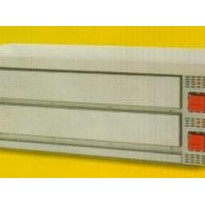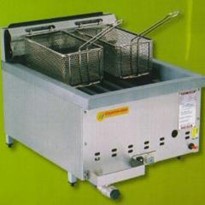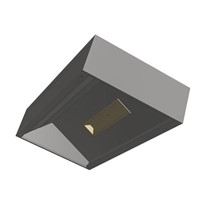The last thing you want is to fail a health inspection and suffer a hefty fine (which can end up tarnishing your restaurant’s reputation). That’s why it’s important to establish a thorough cleaning regimen along with having the right sinks and dishwashers to keep food as safe as possible.
This article will cover everything you need to know about the different types of sinks and dishwashers. That way, you’ll know which one to use and how it affects your kitchen’s sanitation.
Commercial kitchen sinks
Most commercial kitchen sinks are made of stainless steel because it’s durable, it’s resistant to high temperatures, and is easy to clean. You’ll notice that most restaurant prep tables are made of stainless steel because it isn’t that difficult to keep them sanitized. Kitchen sinks come in a variety of types and the one you need will depend on your kitchen operations.
Scullery sinks in Australia are generally composed of two sinks, close to the dishwasher. One to wash, or soak items, and the next closer to the dishwasher, that is used for rinsing. Often a waste, or scrapping hole in the bench, placed prior to that wash sink, to be used to remove food scraps. Most commonly a Pre-rinse spray arm is placed between the sinks, to aid in washing and rinsing. Only is there is no dishwasher, is a third sink used for Sanitizing (Sanitizing Scullery sink)
The main scullery sink operation is to 1- Scrap, 2 – Pre-wash or soak, 3 – Pre-rinse
After this the dishwasher takes over, where items are washed with the required amount of warm 60deg detergent diluted water, then rinsed with 82+ deg rinsing water. These temperatures are paramount in meeting health codes.
1. Sanitizing Scullery sink
A scullery sink is a type of sink that has three basins. These basins help complete the entire cleaning process from washing, to rinsing, and finally, sanitizing. Scullery sinks are a staple in most commercial kitchens because of its versatility. Even if you invest in a commercial dishwasher, a scullery sink will still prove useful in quick-wash scenarios. Your kitchen staff can quickly clean a knife or pan using the scullery sink, thus saving them time from having to wait for a dishwasher’s cycle to finish.
Scullery sinks can also serve as a backup dishwashing area in the event that your commercial dishwasher breaks down during a shift.
2. Prep sink
As the name implies, a prep sink is where food is prepared. This is where your cooks will rinse vegetables, drain pasta, and even scrub potatoes. Preps sink are crucial to preventing food contamination as you don’t want to prepare food on the scullery sink or hand-washing stations. Most prep sinks include attached tabletops called drainboards where you can place freshly rinsed food and have the water drip directly onto the sink.
3. Handwashing stations
When it comes to food safety, regular hand washing is a must. That’s why every commercial kitchen by law, has to have a dedicated hand washing station to prevent the spread of germs and bacteria. Ideally, hand washing stations should be placed near workstations to make it easier for your kitchen staff to clean their hands. Health codes require hand washing stations in a food business so make sure you have one inside your kitchen.
Commercial dishwashers
It’s no surprise that almost every food business has a high quality commercial dishwashers inside their kitchen. This piece of equipment helps facilitate one of the most tedious kitchen tasks ever, allowing the kitchen staff to work more efficiently in serving food instead of just washing dishes by hand. Like with kitchen sinks, commercial dishwashers come in many different types and choosing the right one will ultimately depend on your kitchen’s needs.
1. Pass-through dishwasher
A pass-through dishwasher is the most common dishwasher found in commercial kitchens. This type of dishwasher offers a sizable capacity and can wash dishes faster than any type of dishwasher. Aptly named, pass-through dishwashers use a “pass-through” system where dirty dishes feed into the dishwasher and the clean dishes feed out of it.
2. Undercounter dishwasher
An undercounter dishwasher is ideal for small to medium-sized kitchens. It’s a compact unit that’s very well suited for commercial applications, especially food businesses that deal with less table turns. Although they may be a bit limited in terms of its dishwasher capacity, you can still clean a whole lot of dishes with an undercounter dishwasher provided you use the right settings and load cycles.
3. Conveyor dishwasher
For cafeterias, banquet halls, and other large-scale food establishments, a conveyor dishwasher is the perfect choice. This type of dishwasher uses a conveyor belt to transport dirty dishes and clean them at a very fast rate. Since conveyor dishwashers take up huge amounts of kitchen space, these types of dishwashers are best reserved for kitchens that go through hundreds of dishes each shift.
4. Glass washer
For pubs, bars, and bistros, one can never go wrong with having a glass washer. Glass washers are specifically designed to clean glassware by using lower water pressure compared to conventional dishwashers. Glass washers keep your beer and wine glasses spotless and free of watermarks and lip marks. These types of units are very compact and can fit under counters for easy glass cleaning.
Investing in the right kitchen equipment will go a long way towards making your kitchen safer and hygienic. In this case, we’re talking about sinks and dishwashers. Make sure to refer to this guide to help you choose the right equipment for your commercial applications.







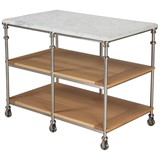
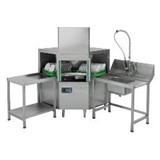





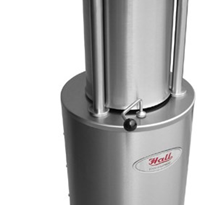

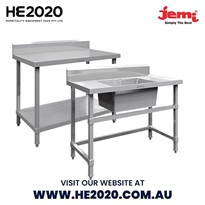
-205x205.jpg)
